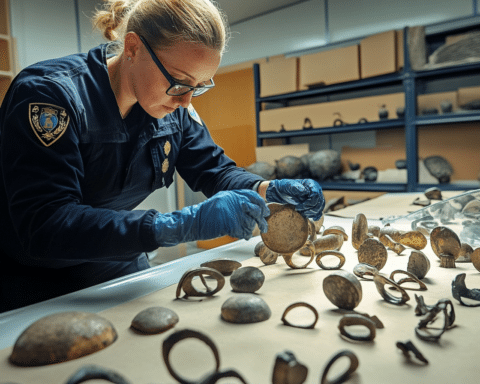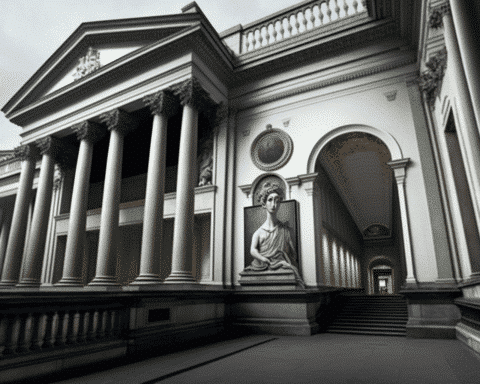The controversial British art dealer, Robin Symes, has relinquished 750 stolen archaeological assets, which have now been returned to Italy following a prolonged battle for their repatriation, according to a statement from the Carabinieri art police on Wednesday.
These artifacts, valued at over €12 million ($12.9 million) by the Italian Ministry of Culture, will be exhibited at Rome’s Castel Sant’Angelo Museum as part of a display of recovered stolen art.
The returned items represent a broad spectrum of ancient Italian and insular cultures, including various archaeological contexts like funerary, cultural, residential, and public, mainly centred around Etruria and Magna Graecia, stated the Ministry of Culture.
The recovered treasures include artifacts from the Roman and Imperial eras, such as a bronze tripod table from an upscale Etruscan family, two parade horse helmets, two funerary paintings, marble male busts, parts of statues and bronzes, and a mural portraying a small temple, likely from a Vesuvian residence.
Additional items of interest are precious gemstones embedded in gold, silver, bronze, bone, and amber. The collection also includes weapons, sarcophagi, funerary urns, ritual items, bronze and marble furnishings, and mosaic and painted decorations.
These artifacts were illicitly procured from unauthorized digs on Italian land by Symes Ltd, Symes’ company known for trafficking cultural artifacts, the Ministry stated.
The Italian Attorney General, Lorenzo d’Ascia, elaborated during a press conference that Symes’ firm, currently under UK bankruptcy proceedings, had persistently resisted Italy’s repeated attempts at recovery. The company has also faced litigation in Italy via the state’s Attorney General, seeking either the return of the artifacts or civil damages.
Symes, known for selling high-value artifacts to esteemed museums worldwide, experienced a significant downfall in 2016 following a raid on a Swiss warehouse he had rented. In his 80s, Symes has remained silent to the media for several years.
Symes was a notable figure during Marion True’s trial; the former J. Paul Getty Museum curator was accused of illicit antiquities trafficking in Italy in 2005. Despite denying his involvement in illegal art trafficking, claiming assurance of the legal status of his purchases, Symes was frequently investigated but never charged due to old statutes of limitations laws.
Brigadier General Vincenzo Molinese of the Carabinieri Art Squad revealed plans to recover an additional 71 objects in the US.
Repatriating these 750 artifacts is another victory in Italy’s ongoing effort to reclaim its stolen cultural heritage. At the press conference, Gennaro Sangiuliano, Minister of Culture, reaffirmed that his program prioritizes recovering illicitly stolen cultural assets and aims to prevent future exploitations by unscrupulous art traffickers.
The victorious return of these stolen cultural assets underscores Italy’s commitment and relentless efforts to preserve its rich cultural heritage. The country’s endeavours set a global precedent, demonstrating that the illicit trafficking of cultural property will not go unnoticed or unpunished. As the world watches, the hope is that these efforts will stimulate stricter regulation and greater responsibility within the global art market, ensuring that cultural heritage remains where it truly belongs – a testimony to the history and identity of its people.




